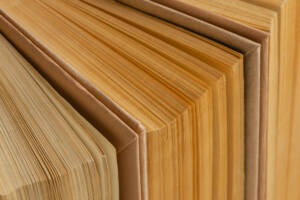As we advance through increasingly modern times, a number of industries have taken steps and developed technology that is leading the world in a more eco-friendly direction, this includes the construction industry. With the use of these materials, eventually homes and buildings will be able to be part of the fight against climate change, not part of the problem.
We have found some eco-friendly materials that are either in development or are just taking off, in the hope that we can spread some awareness on how to modify your home to a more eco-friendly standard.
Not only are these materials so much better for the environment, they will also greatly benefit you in both the long and short term. It is suggested that housing made from sustainable materials will increase the value of your property by a significant amount in todays modern market, with the Department of Energy and Climate Change (DECC) suggesting the increase could be as much as 38% depending on the region.
As well as this significant increase in re-sale value, sustainable materials have been known to significantly decrease utility and maintenance costs, such as gas and electricity bills.
Composite
This wood and plastic hybrid is not new in the construction industry, but it seems that steps have been taken to create more products out of this sustainable material.
In most cases, any material involving plastic is not considered to be an eco-friendly option, however, it is the sustainability of the material that makes it more environmentally efficient in the long term. Creating structures with biodegradable materials, while recyclable and seemingly more eco-friendly, the maintenance and possible replacement of these materials regularly due shrinking, cracking and general wear and tear, can be a massive drain on natural resources.
These problems can occur because these materials don’t have the superior stability that composite has. These issues result in a black hole of energy wastage, in multiple senses of the word. Gaps in any surfaces caused by shrinkage and cracking caused by common issues such as moisture, can cause a surge in your energy bills. As well as this, composite is a one-time job, as they are designed to hold their form and colour, so no human energy is wasted maintaining other materials.
Composite Fencing and particularly Composite Decking has been steadily rising in popularity over the past few years, but recently there has been some experimentation in to other products could be replaced with a composite alternative. One of these products is Composite Roof Shingles, which could help to solve the common issue of heat loss in roof and attic spaces, saving you money whilst using a sustainable material.
Solar Power/Solar Panels
Solar Panels are one of the best-known solutions for creating an eco-friendly home or building, and is often already included in many modern homes. As many may already know, Solar Panels work by converting natural sunlight in to renewable energy to create power.
These panels are increasing in popularity with the ever-growing climate crisis on more people’s minds, but as well as this, Solar Panel developers have been working on a style of panel that is more aesthetically pleasing. Figures show that in last year alone, the amount of solar power in the UK nearly doubled, and it is believed that 10 million houses will have been equipped with solar power in 2020.
Just like all of these sustainable materials, having Solar Panels installed will save you money both in the long term and short term. The only cost to you will be the initial installation fee, after that you can enjoy free renewable energy for the rest of your Solar Panels extremely long life-spans.
As well as boosting the money in your pocket, choosing to have these panels installed will boost the economy as a whole. Because the business of solar power is so up-and-coming, more jobs will be created to keep up with the ever-increasing demand. According to GreenMatch, solar power could generate up to 50,000 jobs by 2030.
Eco-Insulation
Most types of insulation will have some sort of eco-friendly element to them by cutting down on the levels of non-renewable energy, but the materials used to make standard insulation is where the problems start to present themselves. To bind the insulation together and provide all-important fire-resistant abilities, fillers and sprays are used in the manufacturing process.
As much as these materials do provide essential performance-based qualities, they are not responsibly sourced and often contain chemicals that are toxic to humans.
An eco-friendly and just as effective type of insulation is hemp insulation, sometimes known as hempcrete. This type of insulation is made of 92% natural hemp fibres, the other percentage is usually made up of materials such as cornmeal or polyester. It is just as fireproof as insulation made of standard materials, it will char slightly, but will not ignite. In terms of its effectiveness as an insulation, due to hemp’s ability to be compressed, it is said that hemp can be even more insulating than their fibreglass or cellulose counterparts.
On top of this, hemp can be treated exactly the same as standard insulation, meaning that it is just as easy to install, even easier when you take in to account that hemp will not irritate the skin or lungs like fibreglass does. Hemp insulation does cost slightly more, but the extra savings from superior insulation will pay back the cost in no time.
Ferrock
Ferrock is being boasted as a stronger and more eco-friendly alternative to concrete. 4 billion tons of concrete is produced every year, releasing countless amounts of carbon dioxide in to the air as well as being left with non-renewable materials as a result. Ferrock is made from combining waste steel dust and silica from ground up glass, forming a material that is both stronger and more flexible than standard concrete and cement.
This product is not only eco-friendly, but is actually carbon negative, a rarity in the construction industry. This is achieved by the fact that Ferrock absorbs more carbon dioxide than it creates when it hardens. Ferrock is also mostly chemically inactive, giving it the ability to be used in areas that may incur high erosion levels, with the most common erosion catalyst, salt, actually making Ferrock stronger. If all these benefits weren’t enough, because Ferrock is made from waste materials, it is significantly cheaper than concrete.








